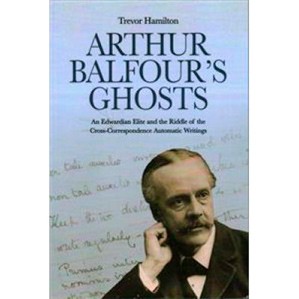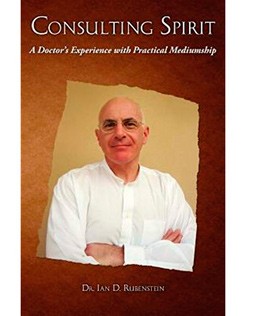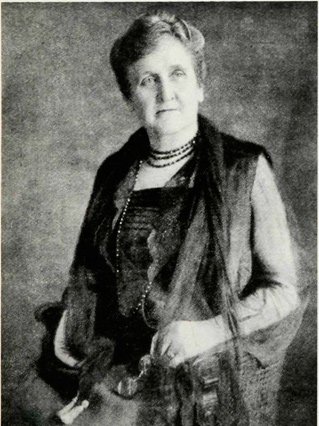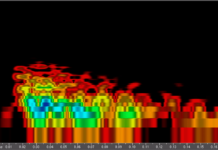Leonora Piper (1857 – 1950)
‘The medium who makes sceptics pant and tremble like nervous horses’
Nearly seventy years after her death the example and case of Leonora Piper (1857-1950) remains a complete enigma and a fascinating subject for researchers. Intensely investigated by psychical researchers in life, her story provides some of the most cogent evidence for paranormal mediumship.
Of Mrs Piper, one of the founders of modern psychology in the English-speaking world William James (1842-1910) wrote that after what seemed like many years of chasing elusive, pseudo-paranormal and fraudulent phenomena her mediumship was one case that he could not explain. Leonora Piper supplied his metaphorical one ‘white crow’ which for him was proof of the paranormal and a refutation of the dogmas of materialism. (See Resurrecting Leonora Piper: How Science Discovered The Afterlife (2013) by Michael Tymm; ‘Report of the Committee on Mediumistic Phenomena’, by William James (1886) in History of Psychiatry March 2016 vol 27 85-100, introduction by Carlos Alvarado).
The case of Mrs Piper is certainly one to make opponents of mediumship ‘pant and tremble like nervous horses’ (Murdie, Alan, Fortean Times Oct 2016). Still considered by many as the foremost trance medium in the history of psychical research she was the subject of numerous experiments over some 40 years in the United States and England. A succession of researchers came away convinced she had access to accurate information not obtained by any known sensory channels. The long period of her mediumship even resulted in a number of the original researchers ‘returning’ as spirits communicating from across death’s veil.
During her séances Mrs. Piper would fall into a trance, and her body would be possessed by what purported to be discarnate spirits duly were termed ‘controls’ (in earlier time they would have been called her ‘familiar spirits’). Controls would sometimes converse directly with sitters, while at other times would mediate messages from other alleged entities wishing to communicate.
In the first eight years of the SPR’s investigation her main control was ‘Phinuit’, supposedly a deceased French physician of whom no record was ever found. After 1892 a ‘George Pelham’ took over speaking and writing through Mrs Piper’s hands. Later on, an apparent committee of entities took charge, comprised of a number of ‘advanced spirits’. Known as the ‘Imperator Group’ took over control of ‘the machine’ as they indifferently termed Mrs Piper. Some of these later controls purported to be earlier researchers who had investigated her and predeceased her. Certainly, the writing attributed to the entities directing her pen was a wonder to behold, as she conducted three different conversations at the same time, speaking whilst writing ambidextrously. Whatever its origin, it was an astonishing talent. Also in her trance state Mrs Piper proved impervious to pain, in the manner of hypnotic subjects from the 18th and early 19th centuries, a clear refutation of those social theorists who try explaining trance states (with the exceptions of epilepsy and intoxication) as a sophisticated form of play-acting.
It is impossible to summarise the Piper mediumship herein, but faced with the accumulated evidence for her powers being genuine, the reactions of many sceptics is rather like a person confronted with a cold bath – to try and get out of it.
Mrs Piper in later life
Only a handful of skeptics have sought to confront and discredit her mediumship, principally by pointing out that whilst in trance she made erroneous and ludicrous statements. This, it is argued, undermined her claims to psychic gifts, (a touching example is at http://rationalwiki.org/wiki/Leonora_Piper on the website declaring itself ‘rational Wiki’). But the problem with this approach is that it is like judging a star footballer on the basis of goals missed rather than those scored.
A classic example of Mrs Piper talking nonsense was cited by Commander R.N. Gould (author of Case for the Sea Serpent and The Loch Ness Monster). In his book Enigmas (1929), he gleefully cites some trance utterances in 1895 in which a communicator, ‘Walter Scott’ described wicked monkeys living inside the Sun. The researcher William Newbold who recorded the session stated that when transcribing his notes some 10 miles away later that evening he and Dr Hodgson “… fell to laughing over this preposterous statement; so loudly indeed did we laugh that I finally cautioned Dr. H. that we would be wakening the whole block.” But, at a subsequent session he admitted to being taken aback when Mrs Piper’s ‘Phinuit’ control demanded to know with whom he had been laughing, “Actually laughing. . . yes sir … and roaring enough to split the canopy of space”. ( Cited in ‘Observations of Certain Phenomena of Trance’ by William Newbold in Proceedings of the SPR vol 14 pp 9-49 1898-99).
Most pertinently it overlooks the fact that when making these statements Mrs Piper was in deep trance, akin to a dreaming state. This was something that the investigators actually present with her at the time fully recognised. Frederic Myers’s stated (Proceedings. SPR. Vol. VI, p. 440): “There were some interviews throughout which ‘Phinuit’ hardly asked any questions and hardly stated anything which was not true. There were others throughout which his utterance showed not one glimmer of real knowledge, but consisted wholly of… random assertions”.
One arch opponent of psi-research, the late Martin Gardner (1914-2010) published a series of attacks on the Piper mediumship between 1996 and 2003 mirroring sceptical objections raised in the early 20th century (and dismissed at the time). (See Martin Gardner The Encyclopaedia of the Paranormal (1996) and his essay ‘Communicating with the dead: William James and Mrs. Piper’ anthologised in The Night is Large and in his collection Are Universes Thicker Than Blackberries? (2003)).
Gardner’s articles have provided the foundation from less informed skeptics to denounce the validity of the Piper mediumship (e.g. their use by contributors to such works as The Myth of An Afterlife (2015) edited by Michael Keene and Keith Augustine. But Gardner was in turn subject to a wide-ranging critique in How Martin Gardner Bamboozled the Skeptics by Greg Taylor first published on line in 2010. The basic thrust of Taylor’s rebuttal is that “Gardner states ‘facts’ which are not just debatable, but completely the opposite to what can be found in the primary sources”.(Source Daily Grail http://www.dailygrail.com/essays/2010/11/skeptical-skeptic 10 No 2010)
Gardner is no longer around to defend himself on the scaffold of criticism. Perhaps elderly skeptics should (like certain elderly psychical researchers) be forgiven for the errors into which they creep in the intellectual loneliness of their twilight years. But to quote Shakespeare in the Merchant of Venice ‘For as thou urgest justice, be assured. Thou shalt have justice more than thou desirest’ and people are likely to reply in kind. Indeed, if Gardner ever did consult the original sources, his writings on Mrs Piper might best be described as an exercise in planned amnesia in disregarding positive evidence which the contemporary documents provide. Ultimately, the intellectual pit into which sceptics tumble is that in condemning the statements of Mrs Piper for errors and manifest absurdities which appear in the scripts, they also implicitly recognise that on occasions she proved bafflingly accurate.
Despite the robust scepticism of yesteryear extending to hiring private detectives to spy upon and trail Mrs Piper, there was never any evidence that in her normal state she practised fraud, tricked sitters or ever obtained information from contacts or published sources. Looking at the totality of evidence there was no explanation for Mrs Piper’s talents, save a psychical one. Although her powers remained a mystery, the positive conclusions that could be reached were that ‘Phinuit’ and the controls could not be taken at face value; that sometimes they made incorrect statements and were unable to answer questions correctly; that the medium, when in trance, could potentially and probably did pick up some information from the sitters by muscle-reading (see Proceedings VI at 451, and 562) but for most of the time Mrs. Piper’s ‘communicators’ used her hand(s) to write, rather than speaking ‘through’ her voice, severely limiting any chance of contact mind reading. The conclusion was that she had genuine psychic powers.
REAL QUESTIONS SPIRITS, PSI POWERS OR WHAT?
As to the reality of Mrs Piper’s later spirit controls – purportedly the writer George Pelham (1860-1892) and the erudite psychical researcher Edmund Gurney (1847-1888) – were considered unconvincing by those testing her. The deceased ‘Pelham’ had apparently lost his knowledge of classic languages and philosophy. Frank Podmore wrote that the Gurney control sounded nothing like the personality of the real Gurney. William James also strongly rejected the claim that the real personality of Gurney actually communicated. In an experiment to test if the controls were purely fictitious, the psychologist G. Stanley Hall (best known for his work on adolescence) invented a niece called Bessie Beals and asked Piper’s ‘control’ to summon her. Bessie appeared, answered questions and accepted Hall as her uncle but the Bessie in question was a fiction. But on other occasions Mrs Piper produced accurate information which, at the very least, was not consciously recalled by any living person and only discovered after probing enquiries.
But at the very least, Mrs Piper seemed to demonstrate some kind of unconscious telepathy or clairvoyance. Later she was involved with what became known as the ‘cross correspondences’ where separate mediums appeared to disparate messages which, when fitted, suggested surviving discarnate presences contacting the living in a complex code.
The ultimate origin of these communications remains a mystery and although we may use the term ‘unconscious mind’ we do not understand what it really is. During her period of the most intensive testing Mrs Piper confessed she did not know where the information came from. In the Boston Advertiser of 25 October 1901 she stated: “Spirits of the departed may have controlled me and they may not. I confess that I do not know.”
If consciousness can survive the dissolution of the physical body, it may operate in a wholly different way to the waking, living self, and more akin to the state of dreaming. That the post-mortem state is like a dream for the surviving dead is one that has often been suggested in respect of both ghosts and séance communications received over the years; it might also explain why once great living minds so often seem to have lost their intellectual powers when purportedly communicating after their deaths or that their communications are vague and fragmentary.

A landmark study of the cross-correspondences the best and most accessible in a century, examining one of the most complex and long-running experiments in psychical research was published by Trevor Hamilton in 2017.(See Arthur Balfour’s Ghosts: An Edwardian Elite and the Riddle of the Cross-Correspondence Automatic Writings (2017) .

PATTERN AND DESIGN ? CASES ACCUMULATE….
In confirming that significant patterns suggestive of design (whether unconscious or not) gexists within the data it demonstrates that further study of such material is justified, whether a paranormal one or not. The riddle remains, just how is this material produced? There are also more recent mediums from the 20th century equally worthy of study, such as Geraldine Cummins and Ena Twigg and the Brazilian Chico Xavier and the phenomena has not ceased in the 21st century (see Consulting Spirit: A Doctor’s Experience with Practical Mediumship (2011) by Ian Rubenstein. (https://www.spr.ac.uk/book-review/consulting-spirit-doctor-s-experience-practical-mediumship-ian-d-rubenstein).
It is at this point that the evidential questions worthy of discussion shift. It is no longer a question between being genuine or a fake, but a question of which hypothesis best explains the actual evidence. For those who have grasped this, informed division of opinion falls between those favouring a super-ESP or ‘super-psi’ explanation of these talents and those considering (as many did at the time) that these were indeed discarnate surviving personalities, or ‘spirits’ as the traditional spiritualist explanation proposed. However, although such theories can be postulated, presuming either (or both) to be true, we cannot determine which.





